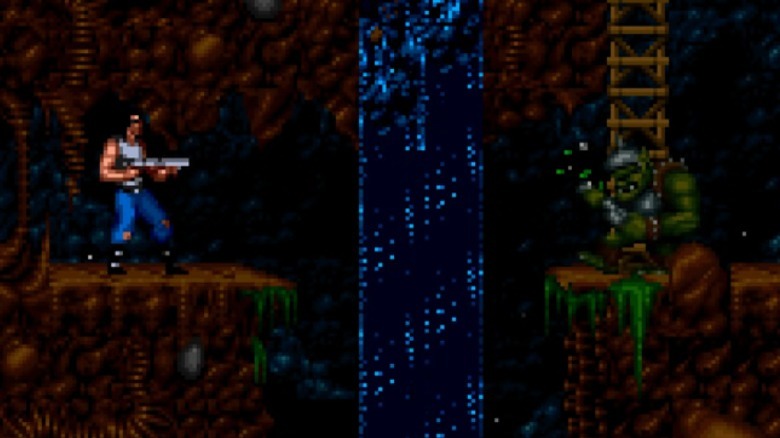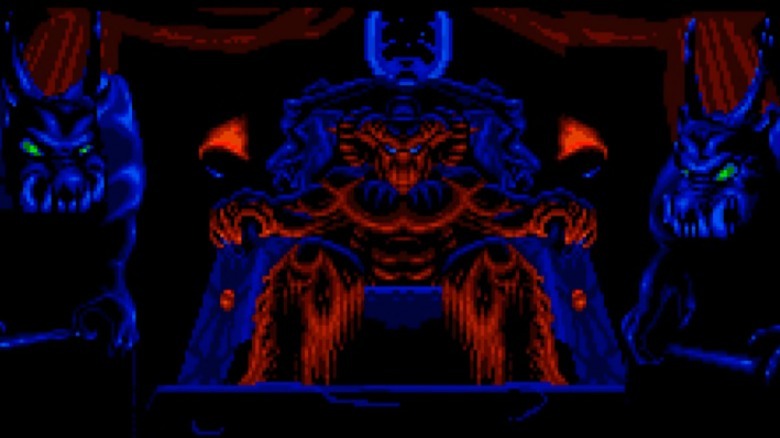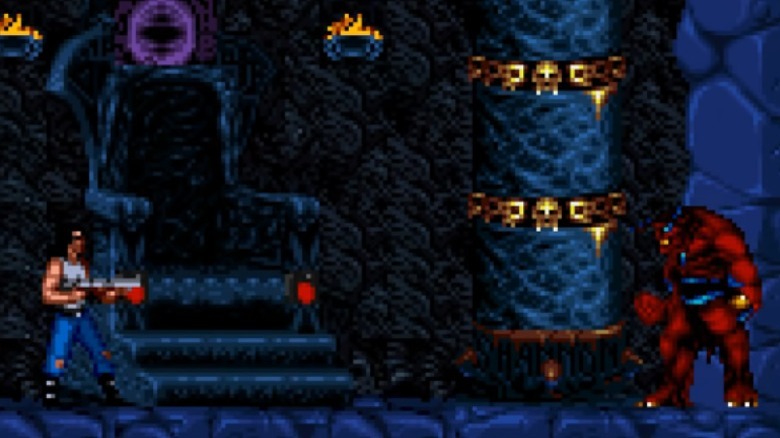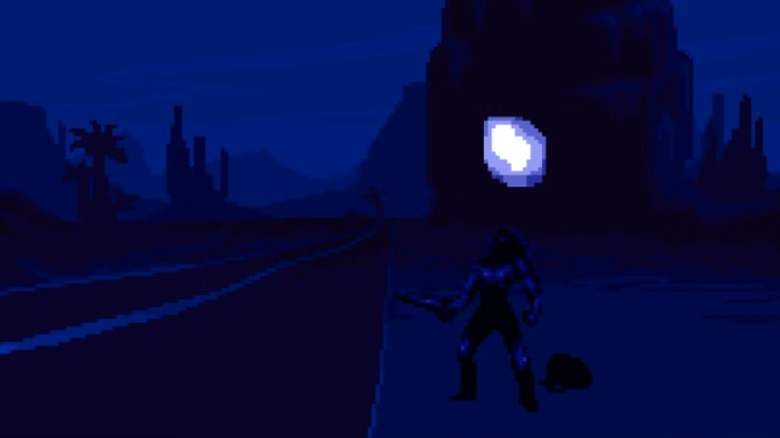The Blizzard Entertainment SNES Game You Likely Never Played
Few would dispute that Blizzard Entertainment is a massive force in the gaming industry. Titles like "Overwatch," "Diablo," and "World of Warcraft" have driven the once tiny studio to the apex of the gaming world, but there was a time when Blizzard was just a small developer founded by three UCLA graduates who wanted to make games. The company was founded in 1991, and most of its early work revolved around converting existing titles to work on home computers, but within just a few years, Blizzard was able to start developing its own games. The RTS game "Warcraft: Orcs and Humans" came out in 1994. It was easily the most popular of these early releases, with Blizzard's bio for co-founder Frank Pierce claiming that it sold over 100,000 copies in the first year (via WayBackMachine). This was the seed of the "Warcraft" franchise that would become the bedrock of Blizzard's success.
There are a number of other titles that Blizzard created that didn't make it out of the '90s, though. One of these was called "BlackThorne." It was released the same year as "Warcraft" for the Nintendo SNES, Sega 32X, Mac, and PC, but didn't receive nearly the same level of notoriety. Here's a look back on one of Blizzard's SNES games that most people have probably never played.
What is Blackthorne?
While many studios chose to specialize in a specific type of game and stick to it, even in its early days, Blizzard explored a diverse portfolio of genres and gameplay styles. "Blackthorne" is an action platformer that lets players take control of Kyle "Blackthorne" Vlaros, a long-haired action hero who fights his way through the dark kingdom of Tuul using a shotgun. Action platformers were at the height of their popularity in the early '90s, with franchises like "Super Mario World," "Donkey Kong Country" and "Sonic the Hedgehog 2" all ranking among the best selling titles of the decade, (per VGCharts), but "BlackThorne" was different from those with more mainstream success. It was targeted at a more mature audience.
The gameplay was mostly focused on the player using Kyle to navigate huge, multi-layered, fantasy structures. He would have to climb walls, sprint and jump across perilous gaps, solve puzzles, and defeat enemies to reach his objectives. These features might seem downright ordinary by today's standards, but the level of detail and complexity in the level design was quite impressive for the time. One of the other main attractions of the game was the fluidity of its animations, though. Even simple motions, like Kyle putting away his shotgun after blasting an enemy, were incredibly smooth for the time.
The world of Tuul
The opening cinematic for "Blackthorne" pans down on a demonic king named Sarlac sitting on the throne of a gothic castle. He orders his monstrous hoard of minions to destroy King Vlaros and to bring him an object called the Lightstone. It then shifts to the besieged and burning castle Stonefist. Here, King Vlaros gives the Lightstone to his son, Kyle, before ordering his court wizard to send the boy to Earth where he and the stone will be safe until such time as Kyle has grown strong enough to return to Tuul and fulfill his destiny. 20 years later, Kyle is teleported to Tuul with his shotgun, where he finds his father's people have been enslaved by Sarlac, and he embarks on a journey to defeat the dark lord.
While "Blackthorne" definitely had its own unique identity, there is a certain familiarity between its Kingdom of Tuul and the "Warcraft" Kingdom of Azeroth. This is no coincidence. "We always worked on multiple games at the same time," Blizzard artist Samwise Didier stated in an official retrospective about the game. "We had to be able to snap back and forth between the different looks. Luckily, they were all Blizzard games, so they all had similar vibes, like heroic characters and colorful environments. Our first orcs were done in Blackthorne."
It's interesting to think that the orc hordes doing battle in "World of Warcraft" today actually originated in this dark fantasy action platformer.
Blizzard's Rule of Cool
One of the most unique aspects about "Blackthorne" is Kyle himself. Very few games at the time featured modern protagonists in fantasy settings. Kyle looked like a character out of "The Terminator." He wore ripped blue jeans, a white tank top, leather motorcycle boots, and black sunglasses. It was the sort of thing that didn't seem like it should work, but somehow it did.
Didier referred to this design as part of a mindset at Blizzard called "the rule of cool." He said that this was how the dev team made many of its aesthetic decisions. "If it is cool, it goes in. If it ain't cool, make it cool or kill it," he said. "In all honesty, there was no magic to it, no grand idea to bend genres or mediums. In the 80s and 90s, that outfit was what all us cool kids wore. Blackthorne got teleported back to his world with what he had on him at the time."
Didier also explained that much of the game's design was bound by the restrictions of the SNES, which had a limited storage capacity on its cartridges, but that this restriction pushed the team to be as creative as possible with a limited color palette and range of animations.
Sound design that's out of this world
While not as immediately apparent as the visuals in the game, the sound design in "Blackthorne" was also quite innovative as well. Much of the synth music used in the game actually had a more futuristic feel, which went surprisingly well with the game, given the mismatched time periods of the protagonist and the setting. The soundtrack ranged from dark and foreboding to fast-paced and tense, depending on the level, with the theme of the final dungeon having a particularly strong, futuristic "final-march" vibe. In addition to giving the game an unsettling tension, this soundtrack fits in better with the sounds of shotgun blasts and electronic tools being used in the game than a more traditional fantasy soundtrack might have.
This music was composed by Glenn Stafford, who was also the principal composer on several of Blizzard's other major IPs, such as "Warcraft," "StarCraft," "World of Warcraft" and nearly all of its expansions. In the same way that Didier's team was limited in their visuals, the SNES also presented challenges for the music. "We had a limit of eight voices or notes at once, including sound effects," said Stafford. "We really had to prioritize and find creative ways to maximize memory while creating as full a soundscape as possible."
Despite these limitations, however, Blizzard's team managed to make a game that, while odd, is certainly worth remembering.





